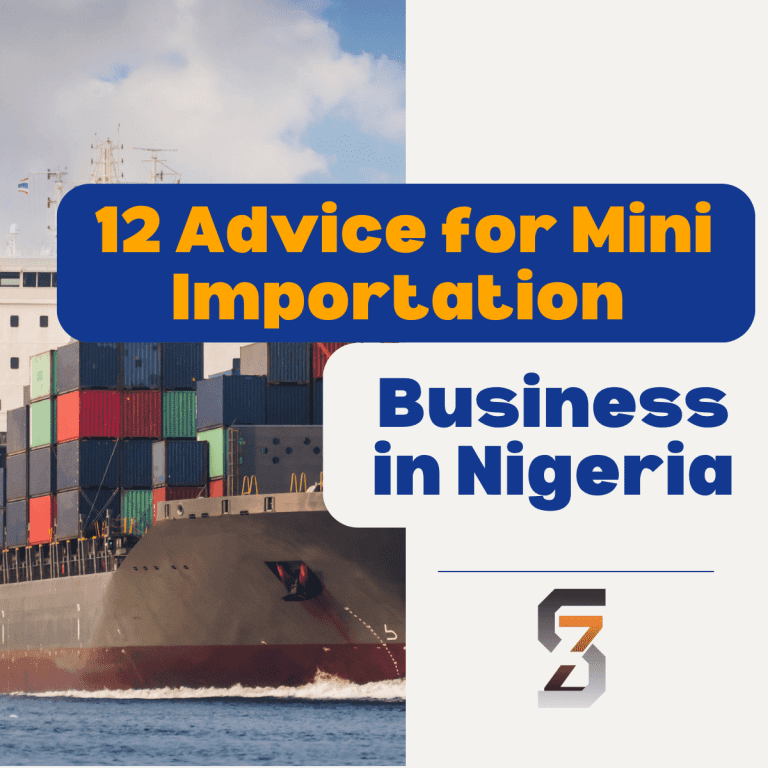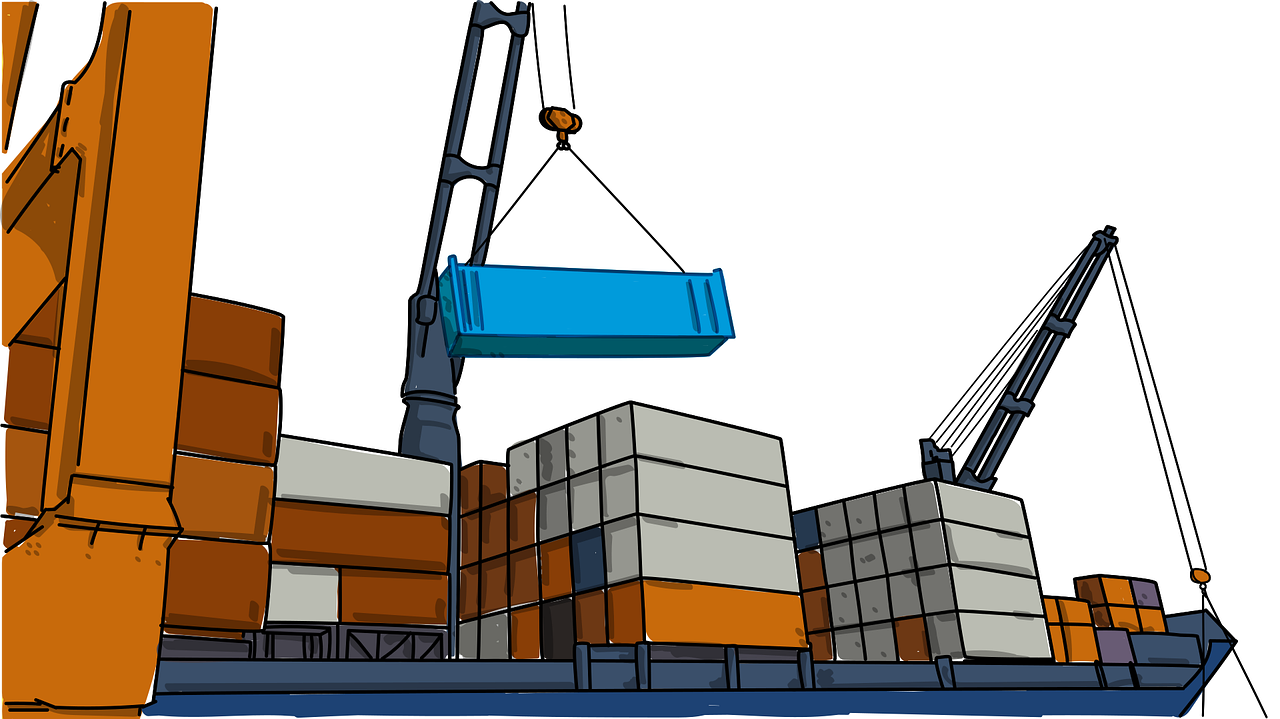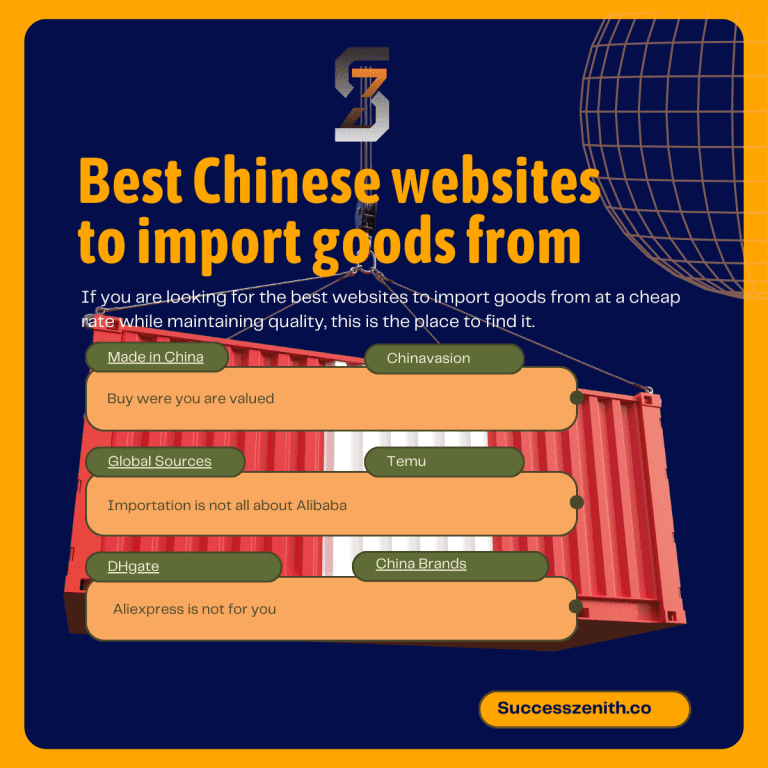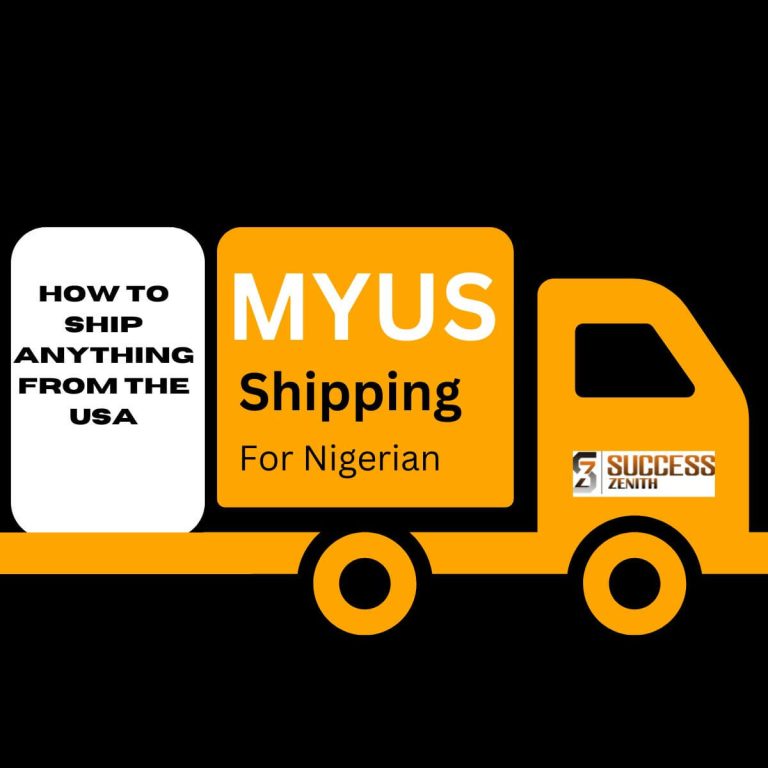Please Follow us on social media >>>>
Importation Business Terms and Acronyms.
If you don’t know the Importation terms and acronyms, you may make a costly mistake while importing your goods. This article helps you out. (These terms are also known as Incoterms)
Before we go any further, This article is part of a series. It is part of a comprehensive Mini-Importation tutorial for both newbies and pros.
My name is Echez O’Ford, your mini-importation trainer.
If you are wondering where to start on your importation journey, here is A Quick Guide on How to Start Mini-Importation Business Today
Importation can be a highly rewarding business venture, offering access to a wealth of international markets and a diverse range of products. It does not matter your level of formal education, your location, or the currency your country uses.
Now let’s dive into the juice of this article on the Importation terms and acronyms. I tell you; importation is fun if you know your way around it.
However, it can also be a complex and challenging process with a multitude of regulations, logistics, and financial considerations to navigate.
From customs and trade regulations to transportation logistics, legal and financial compliance, and product-specific requirements, there are many factors to consider when importing goods.
Whether you’re a seasoned importer or just starting in the world of international trade, it’s crucial to stay informed and up to date on the latest industry trends and best practices to ensure the success and profitability of your business. Your journey starts with knowing what words are used in the industry.
In this context, having a comprehensive understanding of the terms and acronyms commonly used in the importation business can go a long way toward streamlining the import process and avoiding costly mistakes.
Importation Business Terms and Acronyms: A Comprehensive Glossary.
So, I have pulled together a list of Importation terms you are likely to come across while doing business.
Let’s dive into the world of importation and explore some of the essential terminologies that every importer should know.
- AD/CVD: Antidumping and Countervailing Duties – AD/CVD are trade remedies governments impose to counteract unfair trade practices such as dumping and subsidies. Dumping occurs when foreign companies export goods at prices lower than domestic market prices to capture a larger market share. Countervailing duties are imposed to offset the subsidies given to foreign companies to make their products more competitive.
- ATA Carnet: Admission Temporaire/Temporary Admission Carnet – An ATA Carnet is an international customs document used to temporarily import goods into a foreign country without paying customs duties or taxes. It is commonly used for exhibitions, trade shows, and professional equipment.
- BOL: Bill of Lading – A bill of lading is a legal document issued by a carrier that details the shipment of goods and serves as a receipt for cargo. It contains the name of the carrier, the origin and destination, the type and quantity of goods, and the terms of delivery.
- C&F: Cost and Freight – C&F is a shipping term that indicates that the cost of the goods and the freight charges are included in the price quoted to the buyer. The seller is responsible for delivering the goods to the port of destination and paying the freight charges.
- CIF: Cost, Insurance, and Freight – CIF is a shipping term that indicates that the cost of the goods, the freight charges, and the insurance are included in the price quoted to the buyer. The seller is responsible for delivering the goods to the port of destination and paying the freight charges and insurance premium.
- CO: Certificate of Origin – A certificate of origin is a document that certifies the country of origin of the goods being shipped. It is used for customs clearance and to determine the eligibility of the goods for preferential treatment under trade agreements.
- COO: Country of Origin – COO refers to the country in which a product was manufactured or produced. It is used to determine the eligibility of the product for preferential treatment under trade agreements and to comply with customs regulations.
- CPT: Carriage Paid To – CPT is a shipping term that indicates that the seller is responsible for delivering the goods to the carrier and paying the transportation costs to the destination. The buyer is responsible for the insurance and other charges after delivery.
- DDP: Delivered Duty Paid – DDP is a shipping term that indicates that the seller is responsible for delivering the goods to the buyer’s premises and paying all the duties, taxes, and charges associated with the importation of the goods.
- DDU: Delivered Duty Unpaid – DDU is a shipping term that indicates that the seller is responsible for delivering the goods to the buyer’s premises but not responsible for paying the duties, taxes, and charges associated with the importation of the goods.
- ECI: Export Control Classification Number – The ECI is a classification number assigned to goods by the U.S. government to determine their export control status. It is used to determine whether an export license is required and to comply with export regulations.
- EORI: Economic Operator Registration and Identification – EORI is a registration number assigned to companies by the European Union to track their import and export activities. It is used for customs clearance and to comply with customs regulations.
- ETA: Estimated Time of Arrival – ETA is the expected date and time of arrival of a shipment at its destination. It is used for logistics planning and to inform the recipient of the expected delivery date.
- ETD: Estimated Time of Departure – ETD is the expected date and time of departure of a shipment from the port of origin. It is used for logistics planning and to inform the recipient of the expected delivery date. 15. FCL: Full Container Load – FCL refers to a shipment that occupies a full container. The buyer pays for the entire container, regardless of the amount of cargo shipped.
- FOB: Free on Board – FOB is a shipping term that indicates that the seller is responsible for delivering the goods to the port of departure and loading them onto the carrier. The buyer is responsible for the freight charges and insurance after loading.
- GSP: Generalized System of Preferences – GSP is a program that allows developing countries to export certain goods to developed countries at reduced or zero tariffs. It is intended to promote economic development in developing countries.
- HS Code: Harmonized System Code – The HS Code is a standardized system used to classify goods traded internationally. It consists of six-digit codes that are used for customs clearance and to determine the duty rates and taxes applied to the goods.
- IOR: Importer of Record – The IOR is the person or company that is responsible for the importation of goods into a country. It is responsible for complying with customs regulations, paying customs duties and taxes, and ensuring that the goods meet the country’s standards and regulations.
- ISF: Importer Security Filing – The ISF is a document that must be filed with U.S. Customs and Border Protection by the importer or its agent at least 24 hours before the shipment departs from the port of origin. It contains information about the shipment, including the shipper, the consignee, the contents of the shipment, and the container number. It is used to improve security and prevent smuggling.
- LCL: Less than Container Load – LCL refers to a shipment that does not occupy a full container. The buyer shares the container space and pays only for the space used.
- NAFTA: North American Free Trade Agreement – NAFTA was an agreement signed between Canada, Mexico, and the United States, which eliminated trade barriers and facilitated the free movement of goods between the three countries.
- NVOCC: Non-Vessel Operating Common Carrier – An NVOCC is a company that does not own vessels but arranges for the transportation of goods on behalf of shippers.
- OBL: Ocean Bill of Lading – The OBL is a document issued by a carrier that serves as a receipt for the cargo and evidence of the carrier’s agreement to transport the goods to their destination. It is also used as proof of ownership and allows the buyer to claim the cargo at the port of destination.
- POA: Power of Attorney – A POA is a legal document that authorizes an individual or company to act on behalf of another individual or company. In the importation business, it is commonly used to authorize a customs broker to act on behalf of the importer.
- ROO: Rules of Origin – ROO are the criteria used to determine the country of origin of a product. It is used to determine the applicable tariffs, trade policies, and regulations for the product.
- SED: Shipper’s Export Declaration – The SED is a document that must be filed with the U.S. Census Bureau for all exports valued at over $2,500. It contains information about the exporter, the consignee, and the goods being exported.
- SLI: Shippers Letter of Instruction – The SLI is a document used by the shipper to instruct the carrier on how to handle the shipment. It contains information about the consignee, the type of cargo, and the terms of the shipment.
- TARIFF: A tariff is a tax on imports or exports imposed by a government. It is used to protect domestic industries, regulate trade, and generate revenue for the government.
- TEU: Twenty-foot Equivalent Unit – A TEU is a unit of measurement used to describe the capacity of a container ship. It refers to the capacity of a standard 20-foot container.
- THC: Terminal Handling Charges – THC is charges imposed by the terminal operator for handling a shipment at the port of origin or destination.
- TPP: Trans-Pacific Partnership – TPP was a trade agreement signed between several Pacific Rim countries, including the United States, Canada, Japan, and Australia. It aimed to lower trade barriers and promote economic growth among member countries.
- TPO: Trade Promotion Organization – A TPO is an organization established by a government to promote and facilitate international trade.
- TSO: Technical Standard Order – A TSO is a certification issued by the Federal Aviation Administration (FAA) to products that meet certain technical standards. It is required for products used in aviation, such as aircraft parts and equipment.
- UL: Underwriters Laboratories – UL is a global safety certification company that provides safety testing and certification services for a wide range of products.
- USITC: United States International Trade Commission – The USITC is an independent federal agency that investigates and reports on trade issues, including intellectual property rights, trade agreements, and tariff policies.
- VAT: Value Added Tax – VAT is a tax on the value added to a product at each stage of production and distribution. It is commonly used in Europe and other parts of the world.
- WCO: World Customs Organization – The WCO is an intergovernmental organization that develops and promotes international customs standards and best practices.
- WTO: World Trade Organization – The WTO is an international organization that regulates trade among its member countries. It aims to promote free and fair trade by reducing trade barriers and resolving trade disputes.
- YTD: Year to Date – YTD refers to the period from the beginning of the year up to the current date. It is commonly used in financial reporting to show the performance of a company or investment over a specific period.
- AEO: Authorized Economic Operator – An AEO is a company that has been certified by customs authorities as a trusted and reliable partner in the supply chain. They are entitled to certain benefits, such as simplified customs procedures and reduced inspections.
- APHIS: Animal and Plant Health Inspection Service – APHIS is a division of the United States Department of Agriculture that is responsible for protecting the nation’s agriculture and natural resources from pests and diseases.
- BAF: Bunker Adjustment Factor – BAF is a surcharge added to the freight rate to compensate for fluctuations in fuel prices.
- C-TPAT: Customs-Trade Partnership Against Terrorism – C-TPAT is a voluntary program implemented by U.S. Customs and Border Protection to enhance the security of the supply chain and reduce the risk of terrorism.
- CBP: Customs and Border Protection – CBP is a division of the U.S. Department of Homeland Security that is responsible for enforcing trade regulations and securing the nation’s borders.
- CIF: Cost, Insurance, and Freight – CIF is a trade term that means the seller is responsible for the cost of the goods, insurance, and freight to the port of destination.
- COO: Certificate of Origin – A COO is a document that certifies the country of origin of a product. It is used to determine the applicable tariffs and trade policies for the product.
- CPSC: Consumer Product Safety Commission – CPSC is an independent agency of the U.S. government that is responsible for protecting the public from unreasonable risks of injury or death associated with consumer products.
- CRF: Currency Adjustment Factor – CRF is a surcharge added to the freight rate to compensate for fluctuations in currency exchange rates.
- CY: Container Yard – CY is a facility where containers are stored and loaded onto trucks or ships for transport.
- ETA: Estimated Time of Arrival – ETA is the expected time when a shipment or vessel will arrive at its destination.
- FCL: Full Container Load – FCL refers to a shipment that occupies a full container. The buyer pays for the entire container space and has exclusive use of the container.
- FDA: Food and Drug Administration – FDA is a federal agency of the U.S. Department of Health and Human Services that is responsible for regulating food, drugs, cosmetics, medical devices, and other products.
- FOB: Free on Board – FOB is a trade term that means the seller is responsible for the cost of the goods and loading them onto the ship at the port of origin.
- Freight forwarder: This is the name given to individuals and organizations charged with the responsibility of making sure your good gets to you. They take care of the different logistics, consolidation, and nitty-gritty of shipping your goods for a fee.
- GATT: General Agreement on Tariffs and Trade – GATT was an international agreement signed by over 100 countries to reduce trade barriers and promote international trade.
- HAZMAT: Hazardous Materials – HAZMAT are materials that pose a risk to human health or the environment, such as chemicals, explosives, and radioactive materials.
- HTS: Harmonized Tariff Schedule – HTS is a system used to classify goods for import and export. It is used to determine the applicable tariffs and trade policies for the goods.
- IATA: International Air Transport Association – IATA is a trade association of airlines that represents the global airline industry and sets standards for air travel.
- ICC: International Chamber of Commerce – ICC is an international organization that promotes international trade and investment and provides a forum for businesses to discuss and resolve trade issues.
- IMDG: International Maritime Dangerous Goods Code – IMDG is a code developed by the International Maritime Organization that sets standards for the transport of dangerous goods by sea.
- INCO Terms: International Commercial Terms – INCO Terms are a set of standardized trade terms published by the International Chamber of Commerce that define the rights and obligations of buyers and sellers in international trade transactions.
- ISF: Importer Security Filing – ISF is a document required by U.S. Customs and Border Protection for all ocean shipments arriving in the United States. It provides information about the shipper, consignee, and cargo.
- LCL: Less than Container Load – LCL refers to a shipment that does not occupy a full container. The buyer shares the container with other shippers and pays only for the space used.
- NAFTA: North American Free Trade Agreement – NAFTA was an agreement signed by Canada, Mexico, and the United States to eliminate tariffs and other trade barriers between the countries.
- NVOCC: Non-Vessel Operating Common Carrier – NVOCC is a company that provides ocean freight services but does not own or operate its own ships. They arrange for the transportation of goods using other companies’ ships.
- OGA: Other Government Agency – OGA refers to any U.S. government agency other than U.S. Customs and Border Protection that has regulatory authority over imported goods, such as the Food and Drug Administration or the Environmental Protection Agency.
- POA: Power of Attorney – A POA is a legal document that authorizes an agent to act on behalf of another person or company in business transactions, such as customs clearance.
- RO/RO: Roll-On/Roll-Off – RO/RO refers to a type of ship or cargo that can be loaded and unloaded by rolling it on or off the vessel, such as cars or trucks.
- SED: Shipper’s Export Declaration – SED is a document required by the U.S. government for all exports valued over $2,500. It provides information about the shipper, consignee, and cargo.
- SLI: Shippers Letter of Instruction – SLI is a document that provides instructions to the freight forwarder or carrier for the shipment of goods.
- T&E: Transportation and Exportation – T&E is a customs procedure that allows foreign goods to be transported through the United States and re-exported without paying import duties or taxes.
- TIB: Temporary Importation Bond – TIB is a customs bond that allows goods to be temporarily imported into the United States without paying import duties or taxes. The goods must be re-exported within a specified time frame.
- TSA: Transportation Security Administration – TSA is an agency of the U.S. Department of Homeland Security that is responsible for ensuring the security of the nation’s transportation systems, including air cargo.
- UCC: Uniform Customs and Practice for Documentary Credits – UCC is a set of guidelines published by the International Chamber of Commerce that governs the use of letters of credit in international trade transactions.
- USPPI: U.S. Principal Party in Interest – USPPI is the person or company in the United States that receives the primary benefit, monetary or otherwise, from an export transaction.
- VGM: Verified Gross Mass – VGM is the weight of a container, including its contents, as verified by an accredited weighing facility.
- WCO: World Customs Organization – WCO is an intergovernmental organization that promotes the harmonization of customs procedures and policies among its member countries.
- WTO: World Trade Organization – WTO is an international organization that promotes free trade and works to reduce trade barriers and protect the rights of member countries.
- 10+2: (ISF) Importer Security Filing and Additional Carrier Requirements – 10+2 is a U.S. customs program that requires importers and carriers to provide additional information about their containers.
- 19CFR: Code of Federal Regulations, Title 19 – 19CFR is the section of the U.S. Code of Federal Regulations that covers customs regulations and procedures.
- AES: Automated Export System – AES is a U.S. government system used for the electronic filing of export information to U.S. Customs and Border Protection.
- B13A: Export Declaration Form – B13A is a form required by the Canadian government for all exports valued at over CAD 2,000. It provides information about the exporter, the consignee, and the goods being exported.
- B/L: Bill of Lading – B/L is a document that serves as a contract between the shipper and the carrier, and provides details about the shipment, including the goods being shipped, the origin and destination, and the terms of the transportation agreement.
- C&F: Cost and Freight – C&F refers to a type of shipping agreement where the seller is responsible for the cost of goods and shipping to the port of destination.
- CPT: Carriage Paid To – CPT refers to a type of shipping agreement where the seller is responsible for the cost of goods and transportation to the destination country, but not for the cost of unloading or customs clearance.
- DDP: Delivered Duty Paid – DDP refers to a type of shipping agreement where the seller is responsible for all costs associated with shipping and import duties, and the buyer only pays for the goods themselves.
- DDU: Delivered Duty Unpaid – DDU refers to a type of shipping agreement where the seller is responsible for all costs associated with shipping, but the buyer is responsible for any import duties or taxes.
- EXW: Ex Works – EXW refers to a type of shipping agreement where the buyer is responsible for all costs associated with shipping, including pickup and transport of the goods from the seller’s premises.
- FAS: Free Alongside Ship – FAS refers to a type of shipping agreement where the seller is responsible for the cost of delivering goods to the port of shipment and placing them alongside the vessel.
- FCA: Free Carrier – FCA refers to a type of shipping agreement where the seller is responsible for delivering the goods to a carrier specified by the buyer.
- FOB: Free On Board – FOB refers to a type of shipping agreement where the seller is responsible for delivering the goods to the port of shipment and loading them onto the vessel.
- HS Code: Harmonized System Code – HS Code is a standardized system of names and numbers used to classify goods in international trade. It is used by customs authorities to determine tariffs and other trade regulations.
- Incoterms: International Commercial Terms – Incoterms are a set of standardized trade terms published by the International Chamber of Commerce that define the rights and obligations of buyers and sellers in international trade transactions.
- L/C: Letter of Credit – L/C is a financial document issued by a bank on behalf of a buyer that guarantees payment to the seller upon delivery of the goods, provided that certain conditions are met.
- NAFTA: North American Free Trade Agreement – NAFTA was an agreement signed by Canada, Mexico, and the United States to eliminate tariffs and other trade barriers between the countries.
- T/T: Telegraphic Transfer – T/T is a method of transferring funds electronically between banks. It is commonly used in international trade transactions.
- UCP: Uniform Customs and Practice for Documentary Credits – UCP is a set of guidelines published by the International Chamber of Commerce that governs the use of letters of credit in international trade transactions.
- VAT: Value Added Tax – VAT is a tax added to the price of goods and services at each stage of production and distribution.
- ATR: Authorized Economic Operator – ATR is a certification program for businesses involved in international trade that demonstrates their compliance with customs regulations and security standards.
- ATA Carnet: Admission Temporaire/Temporary Admission – ATA Carnet is an international customs document that allows goods to be temporarily imported into a country without paying customs duties or taxes.
- CETA: Comprehensive Economic and Trade Agreement – CETA is a free trade agreement between Canada and the European Union that eliminates tariffs and other trade barriers between the parties.
- COO: Certificate of Origin – COO is a document that certifies the country in which a product was manufactured or grown, and is used by customs authorities to determine tariff rates and other trade regulations.
- EIN: Employer Identification Number – EIN is a unique nine-digit number assigned by the U.S. Internal Revenue Service to businesses for tax purposes, including for import/export activities.
- ETA: Estimated Time of Arrival – ETA is an estimated time when a shipment or vessel will arrive at a particular port or destination.
- FDA: Food and Drug Administration – FDA is a U.S. government agency responsible for regulating the safety and efficacy of food, drugs, medical devices, and other consumer products.
- FMC: Federal Maritime Commission – FMC is a U.S. government agency responsible for regulating ocean shipping in the United States.
- GSP: Generalized System of Preferences – GSP is a program that provides duty-free treatment for eligible products imported from designated beneficiary countries.
- HAZMAT: Hazardous Materials – HAZMAT refers to substances or materials that are potentially dangerous or harmful to human health or the environment, and require special handling and transport regulations.
- IATA: International Air Transport Association – IATA is a trade association that represents the global airline industry and develops standards and regulations for air transportation.
- ITAR: International Traffic in Arms Regulations – ITAR is a set of U.S. government regulations that control the export and import of defense-related articles and services.
- NAFTA Certificate of Origin – A NAFTA Certificate of Origin is a document that certifies that a product meets the requirements for preferential treatment under the North American Free Trade Agreement.
- NVOCC: Non-Vessel Operating Common Carrier – NVOCC is a type of ocean freight forwarder that does not own or operate vessels, but arranges the transportation of goods on behalf of shippers.
- SED: Shipper’s Export Declaration – SED is a U.S. government document that provides information about the goods being exported, the parties involved, and the value of the shipment.
- TIB: Temporary Importation Bond – TIB is a type of bond required by customs authorities for temporary imports of goods, which guarantees that the goods will be re-exported within a specified time frame.
- TSCA: Toxic Substances Control Act – TSCA is a U.S. government law that regulates the manufacture, importation, use, and disposal of chemical substances.
- UN Number: United Nations Number – UN Number is a four-digit identification number assigned by the United Nations to hazardous materials for international transport purposes.
- WCO: World Customs Organization – WCO is an intergovernmental organization that develops and promotes international customs standards and best practices.
- WPA: Wood Packaging Material – WPA refers to the International Standards for Phytosanitary Measures No. 15, which regulates the treatment and marking of wood packaging material to prevent the spread of plant pests and diseases.
Customs and Trade Regulations Terms:
- ACE: U.S. Customs and Border Protection (CBP) website
- AES: U.S. Census Bureau website
- BIS: Bureau of Industry and Security website
- CBP: U.S. Customs and Border Protection website
- CFIUS: Committee on Foreign Investment in the United States website
- EAR: Export Administration Regulations website
- ECCN: Bureau of Industry and Security website
- FCPA: U.S. Department of Justice website
- FTA: Office of the United States Trade Representative website
- GSP: Office of the United States Trade Representative website
- Harmonized Tariff Schedule: U.S. International Trade Commission website
- ITAR: Directorate of Defense Trade Controls website
- NAFTA: Office of the United States Trade Representative website
- SED: U.S. Census Bureau website
- TSCA: Environmental Protection Agency website
- WCO: World Customs Organization website
Logistics and Transportation:
17. ATA Carnet: United States Council for International Business website
- Bill of Lading: International Chamber of Commerce website
- CFS: Shipping Glossary – Marine Insight
- CIF: Shipping Glossary – Marine Insight
- CFR: Shipping Glossary – Marine Insight
- CPT: International Chamber of Commerce website
- CY: Shipping Glossary – Marine Insight
- DAP: International Chamber of Commerce website
- DAT: International Chamber of Commerce website
- DDP: International Chamber of Commerce website
- DDU: International Chamber of Commerce website
- ETA: Shipping Glossary – Marine Insight
- FCL: Shipping Glossary – Marine Insight
- FOB: Shipping Glossary – Marine Insight
- IATA: International Air Transport Association website
- NVOCC: Federal Maritime Commission website
- RORO: Shipping Glossary – Marine Insight
- TEU: Shipping Glossary – Marine Insight
Legal and Financial Terms for Importers:
35. AEO: U.S. Customs and Border Protection website
- AML: Financial Crimes Enforcement Network website
- ATR: World Trade Organization website
- COO: U.S. Customs and Border Protection website
- EIN: Internal Revenue Service website
- FMC: Federal Maritime Commission website
- Incoterms: International Chamber of Commerce website
- IRS: Internal Revenue Service website
- LC: International Chamber of Commerce website
- OFAC: U.S. Department of the Treasury website
- TIB: U.S. Customs and Border Protection website
- UCC: Uniform Commercial Code website
- UCP 600: International Chamber of Commerce website
- UN Number: United Nations website
Product and Industry-Specific Terms:
49. AD: International Trade Administration website
- Anti-Dumping Duty: International Trade Administration website
- C-TPAT: U.S. Customs and Border Protection website
- FDA: U.S. Food and Drug Administration website
- HAZMAT: U.S. Department of Transportation website
- Lacey Act: U.S. Department of Agriculture website
- MSDS: Occupational Safety and Health Administration website
- PPE: Occupational Safety and Health Administration website
- RoHS: European Union website
- SPS: World Trade Organization website
- Tariff: International Trade Administration website
- WPA: U.S. Fish and Wildlife Service website
Insurance and Risk Management Terms:
61. Cargo Insurance: International Chamber of Commerce website
I update the lists above regularly, if there are more things you would want to know concerning importation, feel free to mention them in the comment section and I will add them or address them.
My name is Echez O’ Ford. I am always here to provide you with all the information you need to run an online business. I expect to hear from you, and I promise to answer all your questions as much as I can.
To Your Importation Success.










[…] attention to. If you are serious about knowing what stands for what, you must check out this topic: Importation Business Terms and Acronyms: a Comprehensive Glossary This is an ideal resource of every importer whether you are new in the business or […]
[…] Did you notice the terms, MOQ, and PT? Everything is explained in this article here: Importation Business Terms and Acronyms. […]
[…] you need to take certain responsibilities and pay attention to factors that will benefit your importation business. Below are some of the actions you can take before you finalize your decision to do […]
[…] With the right approach, you can ensure a successful shipping experience. In this article, I will provide you with some real-life examples of how to ship goods from China to anywhere in the world. If you are not familiar with some of the importation terms and acronyms we will use here, then get up to speed with this Comprehensive Glossary on Importation Business Terms and Acronyms […]
[…] Here are 50+ frequently asked questions about mini importation in Nigeria, along with their answers. You may see words and phrases you are not familiar with, if so, refer to our comprehensive importation acronyms, popularly known as Incoterms. […]